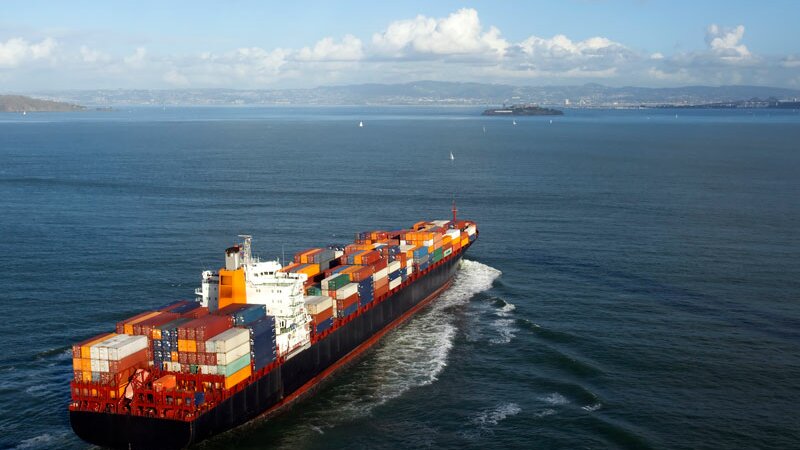Our new NorthStandard site is now live. There will be no new content or updates added to this site. For the latest information, please visit our new site north-standard.com.
Spongy Moth Season - 2022
It is that time of the year when ships calling at certain Far East ports would need to be inspected and certified free of the destructive forest pest related to Lymantrid species, previously referred to as Asian Gypsy Moth...

It is that time of the year when ships calling at certain Far East ports would need to be inspected and certified free of the destructive forest pest related to Lymantrid species, previously referred to as Asian Gypsy Moth (AGM).
The common name 'Asian gypsy moth” will no longer be used as the term “gypsy” has been deemed offensive. The Entomological Society of America (ESA), which makes the Common Names of Insects and Related Organisms List, has adopted ‘spongy moth’ as the new common name for Lymantria dispar.
There is another change this year - as per the joint bulletin issued by the US Department of Agriculture (USDA) and Canadian Food Inspection Agency (CFIA) in January 2022, the risk period during which ships should be certified free of spongy moth, have been revised for some regions -
Regulated Areas and Specified Risk Periods Country | Port or Prefecture | Specified Risk Period 2021 | Specified Risk Period 2022 |
Russian Far East | Nakhodka, Ol'ga, Plastun, Pos'yet, Russkiy Island, Slavyanka, Vanino, Vladivostok, Vostochny, Zarubino, Kozmino | July 1 to September 30 | June 15 to October 15 |
People's Republic of China | All ports in northern China, including all ports on or north of 31°15´ | June 1 to September 30 | June 1 to September 30 |
Republic of Korea | All ports | June 1 to September 30 | June 1 to September 30 |
Japan – Northern | Hokkaido, Aomori, Iwate, Miyagi, Fukushima, Akita, Yamagata | July 1 to September 30 | June 15 to October 15 |
Japan – Central/Western | Niigata, Toyama, Ishikawa | June 25 to September 15 | June 1 to September 30 |
Japan – Central/Eastern | Fukui, Ibaraki, Chiba, Tokyo, Kanagawa, Shizuoka, Aichi, Mie | June 20 to August 20 | June 1 to September 30 |
Japan – Southern | Wakayama, Osaka, Kyoto, Hyogo, Tottori, Shimane, Okayama, Hiroshima, Yamaguchi, Kagawa, Tokushima, Ehime, Kochi, Fukuoka, Oita, Saga, Nagasaki, Miyazaki, Kumamoto, Kagoshima | June 1 to August 10 | May 15 to August 30 |
Japan – Far Southern | Okinawa | May 25 to June 30 | May 25 to June 30 |
Apart from United States and Canada, other countries known to carry out seasonal pest inspection measures are: Australia, New Zealand, Chile and Argentina.
In Australia, the heightened vessel surveillance window is between January and May each year. Vessels that have visited regulated areas during the 2021 specified risk period are being assessed by the Australian Department of Agriculture, Water and the Environment (DAWE) from 1 January 2022. This activity is expected to conclude on 31 May 2022.
In New Zealand, the Ministry for Primary Industries (MPI) is the competent authority dealing with hitchhiker pests, and requirements are set out in part-3 of the Craft Risk Management Standard (CRMS) - Vessels. The requirements, that came into force on 1 February 2018, state that an arriving vessel is considered high risk if in the previous 12 months it has visited any of the regulated areas during the specified risk periods. Such vessels should provide a valid certificate of freedom from an inspection body (approved by the MPI) upon arrival in New Zealand.
In Chile, the requirements apply to ships that, in the past 24 months, visited ports located in North East and Far East Asia between 60°N and 20°N. A copy of the phytosanitary certificate together with a list of the ports called in the last two years is required to be provided to the Chilean Agriculture and Livestock Service (Servicio Agrícola y Ganadero (SAG)) at least 24 hours prior to ship’s arrival.
In Argentina, the requirements apply to ships that, in the past 24 months, visited regulated areas during the specified risk period. A copy of the pre-departure certificate from a recognised certification body issued at the last port of call in a regulated area together with a list of the ports called in the last two years is required to be provided to the Argentine National Food Safety and Quality Service (Servicio Nacional De Sanidad Y Calidad Agroalimentaria, (SENASA)) at least 72 hours prior to ship’s arrival.
Members are recommended to refer to the attached BIMCO’s clause for time charter parties, which aims to provide a practical solution on the basic obligations and responsibilities of owners and charterers when dealing with the Spongy Moth Season.
Category: Loss Prevention

